U.S. Secretary of State Thanks Croatian Government For Support to Ukraine
ZAGREB, 15 March 2022 - U.S. Secretary of State Antony Blinken has expressed his deep appreciation for the strong support of Croatian PM Andrej Plenković and his government for Ukraine, including providing security assistance and accepting refugees, and for Croatia’s active role in NATO, the U.S. Department of State said on Monday.
According to a statement signed by spokesperson Ned Price, Blinken reaffirmed U.S. support for Ukraine "in the face of President Putin's continued war against Ukraine.
"The Secretary expressed his deep appreciation for the strong support of Prime Minister Plenković and his government for Ukraine, including providing security assistance and accepting refugees, and for Croatia's active role in NATO."
Also discussed was the March 10 drone crash in Zagreb.
"The Secretary noted Croatia's critical role in securing the European future of the entire Western Balkans, including Bosnia and Herzegovina. The Secretary also welcomed the March 17 U.S.-Croatia Strategic Dialogue, which will bring together senior-level interagency teams to review joint efforts to advance shared priorities," the State Department said.
Marćelina Vranješ from Split Wins Gold at European Judo Cadet Cup
March 15, 2022 - At the European Judo Cadet Cup in Zagreb, in which 698 athletes from 32 countries participated, the young Marćelina Vranješ from Split achieved the only gold medal for Croatia after a great performance in the tournament.
Two days filled with effort and desire of the best cadets in Europe in Zagreb showed once again why the European Cadet Cup in Zagreb is one of the most respected judo competitions, and Croatian judoka Marćelina Vranješ (over 70 kg) closed it in the best way, with a gold medal, reported Slobodna Dalmacija.
At the European Cadet Cup, which brought as many as 698 athletes from 32 countries to Zagreb despite all the troubles in Europe, Croatia had 48 representatives. Turkey and Israel surpassed that number, sending 64 and 78 competitors, respectively.
The medal for Croatia was won by Marćelina Vranješ (over 70 kg), who on Sunday showed the splendor of talent and in four fights reached first place in her category. The young woman from Split was free in the first round and then celebrated with an ippon against Hassan, making up for the wazari advantage scored by the British.
An ippon in the last minute of the quarterfinals against the Serbian representative Jovanović sent Marćelina to the semifinals. After that, in another turnaround, this time against the French judoka Lang, placed the young girl from Split in the finals. There, in less than a minute, Vranješ defeated the Frenchwoman Cancan and deservedly took the gold medal.
Judokas from 26 countries took the podium, and the representatives of France had the most success, winning seven gold, three silver, and eight bronze medals. The Turkish cadets won one gold and two silver and bronze medals, while the Romanians returned home with one gold and two silver. A large number of national teams remained in Zagreb after the competition because, from March 14 to 16, a training camp will be held.
To read more about sport in Croatia, follow TCN’s dedicated page.
LNG Terminal "Star" of 2021's Exports, Slovenia Main Market for First Time
March the 15th, 2022 - Krk's LNG terminal contributed enormously to Croatia's export ''cake'' last year, with neighbouring Slovenia becoming the main market for the very first time.
As Poslovni Dnevnik/Marija Brnic writes, double-digit export growth rates, published by the Central Bureau of Statistics (CBS) for the first month of this year (44 percent) and last year (28 percent), used to be just a pope dream, and although there are reasons for joy and many good developments, there isn't much space for any euphoria quite yet.
Such a percentage jump was largely due to the low comparative base, due to the coronavirus-induced lockdown in the first part of 2020 and tumbling oil and gas prices, ie the recovery of the global economy and the price jump in terms of energy costs last year.
However, the manufacturing industry has "accumulated" a record 15.4 billion euros in revenue from foreign markets and there is almost no activity that isn't now growing, and there is some good news for export statistics, too. Two events definitely marked last year, when it comes to exports - the role of LNG Croatia (the LNG terminal on Krk) and the first time in which Slovenia rose to the position of the top Croatian export market.
State statistics have recorded a real explosion when it comes to both electricity and gas exports - in just one single year the jump was as much as 421 percent, and in absolute numbers, more than a billion euros worth of the above commodities were exported.
It seems that the Krk LNG terminal contributed the most, whose imported gas quantities remained here in Croatia, and this released significant quantities of gas from other sources, primarily from Russia, which were then exported to other countries. It isn't clear from the CBS data to which countries these quantities were placed, but a visible trace of their origin is left on the import data, due to the strong growth of imports from the USA, Nigeria and Egypt.
Neighbouring Slovenia, on the other hand, ascended the export throne in the last month of last year, and judging by earlier estimates from the Croatian Chamber of Commerce (HGK), the previous item from the statistical records is also crucial for such a result. In total, goods worth 2.43 billion euros were exported to Slovenia from Croatia, which is an increase of 58 percent when compared to the previous year. Just one year earlier, exports to the Slovenes weakened compared to pre-pandemic 2019 by 5.6 percent.
The neighbouring countries of Slovenia and Croatia are very focused on each other and are, as a rule, each other's third export market, but Slovenian figures are still enviable for Croatia, despite the fact that last year they had weaker export growth and significantly higher import growth than Croatia did. Last year, Slovenian exports increased by almost 20 percent and exceeded 39 billion euros, while imports, with almost 31 percent growth, amounted to 42 billion euros. Croatia was Slovenia's fourth export market, but even with high export growth, it wasn't among the top five markets from which it imports goods.
According to the SBS, Slovenia mostly imports from Germany, Italy, Switzerland, China and Austria, and their main export markets are Germany, Switzerland, Italy, and along with Croatia, Austria. Croatia's five main customers, along with Slovenia, are Italy, which just last year began to return to the first position, which it briefly handed over to Germany in 2020, and in both exports exceed 2 billion euros, while Hungary is in fourth position, with Bosnia and Herzegovina coming in fifth.
Croatia also exports more than a billion euros to nearby Austria, and a record result has been achieved on the markets of neighbouring Serbia and across the Atlantic over in the United States. Trade is also growing with Turkey, and it is interesting to note that, contrary to earlier data, the year ended with an increase in exports to China, but also a decline in imports on an annual basis. It's worth noting that the Republic of Croatia imports the most from Germany, out of a total of 28.3 billion euros, 4.2 billion came from that country, followed by Italy, Slovenia, Austria and then by China.
In the currently two most sensitive markets, Russia and Ukraine, Croatia ended the year before the crisis with 204 million euros of exports to Russia and 58 million to Ukraine, with exports to Russia growing and being the largest in six years, while in Ukraine the placement of goods was by 0.9 percent below the level recorded back during the previous year, and those two years were record years for Croatian exports to Ukraine.
Given the events of the current war and harsh sanctions against Russia, it is certain that the figures on the import side with these warring countries will remain high for Croatia; Last year, 463 million euros worth of goods entered Croatia from Russia, and 44 million came from Ukraine.
For more, check out our business section.
New Croatian Post Kukuljanovo Logistics Centre Employing 300+ People
March the 15th, 2022 - The brand new Croatian Post Kukuljanovo logistics centre, about which there has been an enormous amount of talk, is now finally open and has provided welcome employment to more than 300 people.
As Poslovni Dnevnik/Darko Bicak writes, the new Croatian Post Kukuljanovo logistics centre which will work to serve the wider Kvarner and Istria region, worth almost 60 million kuna, was opened last week in the Kukuljanovo Industrial Zone in the Bakar area.
On an area spanning a massive 4200 square metres are areas for sorting, the transport and delivery of shipments, a distribution centre and workshops, and a post office, and the new location employs more than 300 people. A modern business centre for Kvarner and Istria will improve the quality of delivery in the area as a whole.
Its construction completed Croatian Post's largest investment cycle, and Istria and Primorje-Gorski Kotar County received one of the four most modern points in the network of sorting facilities in all of the Republic of Croatia, which includes facilities in Zadar and Osijek and a new sorting centre in Velika Gorica close to Zagreb.
The Minister of Maritime Affairs, Transport and Infrastructure, Oleg Butkovic said that he was glad that the company, which is 100 percent state-owned, has been a positive example of business for years and that Croatian Post is on an equal footing with some of the world's largest competitors.
"Thoughtful investments in digitalisation and infrastructure show that the direction of development of Croatian Post is very clearly defined and is the result of a strategic direction towards the future. It's clear to us that both the present and the future of logistics are packages. The trend of strengthening e-commerce was particularly pronounced in the years of the coronavirus pandemic, when online orders grew into the double digits,'' he said.
Global changes, he pointed out, didn't come as a shock or unpleasant surprise for the company and that numerous investments in infrastructure and digitalisation have turned it into a successful modern company that has a great impact on the domestic economy and encourages the development and growth of overall logistics in this country.
For more, check out our business section.
Intellias: Ukrainian IT Company in Zagreb Begins Hiring Process in Balkans
March the 15th, 2022 - We recently wrote about the Ukrainian company Intellias choosing to move their planned Novi Sad development centre to Zagreb, citing pro-Russian views of the Serbian Government that they could naturally never support. They're now going to be employing people from across the Balkans from right here in Zagreb.
As Poslovni Dnevnik/Lucija Spiljak writes, one of the largest Ukrainian IT companies, Intellias, recently announced that it was giving up on opening a development centre in Novi Sad, Serbia this spring, and moving it instead to Zagreb.
Although the company's decision to relocate is fresh, they have already registered a company here in Zagreb and are currently looking for an office that, according to the company, will meet all the company's criteria and principles of "smart comfort".
Now they're here in Zagreb, they are looking not only for an office, but also for Croatian experts in the so-called Balkan IT hub, where they'll bring their international clients and handle large projects.
Quality solutions
"We're creating a southern European IT hub in which engineers from all over the region will be able to work. We expect that the centre of this IT hub will be in the new office in Zagreb. Croatia is home to a strong IT community and a very well-developed infrastructure where more than 60,000 IT professionals work. We firmly believe that together we will be able to provide our customers with quality technological solutions and services. We plan to hire Croatian experts and talent from across the entire region who are eager to work with us.
Despite the relocation of the office to Zagreb, we may work with some contractors in Serbia, from project to project, because we understand that they also have talented engineers,'' they explained from Intellias.
They evacuated their employees from dangerous parts of Ukraine, which has been under Russian invasion for more than two weeks now. They have already restored 97 percent of their service delivery capacities, and point out that their clients have shown understanding and support during this tumultuous period.
Croatian support
Intelligence leader Vitaly Sedler said in a post on social media that they chose Croatia "because of its consistent pro-Ukrainian position, support for Ukraine's EU bid, and its closing of its skies to all Russian air traffic,'' but also because of the support of Croatian political leadership for displaced Ukrainians fleeing their country. Not to mention the ready and willing Croatian volunteers who have already travelled to Ukraine to help the Ukrainian army in their defence of their homeland against Russian aggression.
Intellias is otherwise one of the largest Ukrainian IT companies with more than 2,500 professionals, which has already received numerous international awards for its work and for being the best IT employer.
Their company development centres are located in Ukraine, Poland, and now right here in Croatia. They also have offices in Germany, Israel, the United States, Saudi Arabia and the United Arab Emirates. Intellias develops complex software solutions and provides professional services, specialises in the automotive industry, navigation systems, finance and telecommunications technologies, and their products are used by more than two billion people worldwide.
For more, check out our business section.
Stjepan Curaj: 6 Suspicious Yachts Tied to Russians in Croatian Ports
March the 15th, 2022 - State Secretary Stjepan Curaj has stated that there are currently six ''suspicious yachts which are tied to Russians'' moored in various Croatian ports.
As Morski writes, State Secretary of the Ministry of Finance, Stjepan Curaj, spoke recently about sanctions put in place against Russians close to Vladimir Putin's regime on RTL. He said that out of a total of 950 oligarchs on the list under current European Union (EU) sanctions, 680 of them were detected on February the 23rd, 2022, as those with direct or indirect ties to the Republic of Croatia.
Stjepan Curaj claimed that it is difficult to talk about the estimated value of their assets and property, and when it comes to movables, he says that six potentially suspicious yachts have been detected moored in Croatian waters and that the procedure surrounding all of that information is ongoing.
He also spoke about the case of a yacht in Betina on the island of Murter, and Stjepan Curaj said that he doesn't know specifically whether it is owned by someone on the infamous list, but in addition to Murter, he says, there are other ports in which this is an issue. He explained the procedure and stated that when it is determined that it is owned or under the control of a person placed on the Russian sanction list, then it is frozen and the Harbor Master's Office prohibits its release and departure. He assumes that this will be the case in Betina as well.
He also mentioned the yacht in Rijeka, which is well-known in the media and which we recently wrote about, and confirmed that it has indeed been frozen.
When asked about sound names involved, he said that Abramovich is the most famous of them all, and when asked if tycoon Vekselberg, who operates down in Dubrovnik and whose property and assets are currently blocked by the USA, is on the list, he claimd that he is on the American list.
As for the consequences for the businesses owned and carried out by these people, and thus for their employees, the Secretary of State says that there is a procedure and clear guidelines. “We need to clearly separate the company from the owner, in that the owner can’t use their company economically and have any financial benefits from it, but we also need to allow it to work because that’s our goal,” he explained.
Finally, he answered the question surrounding confiscated property and the idea coming from Britain to put that property into the function of receiving and caring for Ukrainian refugees. Stjepan Curaj said that sanctions against Russia are prescribed by the 2014 provision and it determines that all property be frozen and be made unable to be used for anything else. If we were to decide to adopt Britain's idea and use it in another way, he says the provision should be changed.
For more, check out our politics section.
Austrian Airlines Croatia Flights to Operate 23 Times Per Week
March 15, 2022 - The latest flight news to Croatia as Austrian Airlines Croatia flights will operate 23 times per week from the beginning of the summer flight schedule.
Austrian national airline and Lufthansa Group member Austrian Airlines will renew seasonal routes from Vienna to Split and Dubrovnik from the end of March, and to Zadar in early April. There will also be an increase in the number of weekly operations at Zagreb International Airport, reports Croatian Aviation.
Namely, Austrian Airlines is reintroducing seasonal routes from its main hub in Vienna to Split and Dubrovnik at the beginning of the summer flight schedule, which begins on March 27 this year. In the first days of April, traffic will resume between Vienna and Zadar Airport.
The first flight between Vienna and Split has been announced for Sunday, March 27. At the beginning of the summer flight schedule, Austrian will operate between the two cities 6 times a week, every day except Tuesdays. Already in the second half of April, there will be an increase in the number of flights on a daily basis.
In the first seven rotations to Split, Embraer 195 aircraft will operate, as well as the largest aircraft from the A320 family, the A321. Currently, there are 2,000 seats in that period.
There will be a similar flight schedule at the beginning of the season to Dubrovnik Airport. Five flights a week have been announced, starting on March 27, every day except Tuesdays and Thursdays, but there will also be an increase in the number of rotations by the Easter holiday.
1,872 seats are available on the first 7 flights between Dubrovnik and Vienna, and A320 and E195 aircraft will operate on the route.
Austrian will introduce a line to Zadar a little later than Split and Dubrovnik. The first flight has been announced for Saturday, April 9, and three flights a week have been announced at the start of the season, every Wednesday, Friday, and Saturday.
Prior to the pandemic, the Austrian airline operated twice a day to Zagreb, but this route has not yet returned to its 2019 capacity. Apparently, this will not happen at the beginning of this summer season either, although there will be an increase in weekly rotations.
Namely, from Sunday, March 27, Austrian will operate between Vienna and Zagreb eight times a week, every day except Wednesday, with two flights a day announced on Fridays and Sundays.
From Sunday, March 27, to Sunday, March 3, Austrian will offer 2,160 seats to and from Zagreb. Namely, as the airline retired all DashQ400 aircraft in June last year, Embraer 195 aircraft with a capacity of 120 seats will fly to Zagreb, so the previously mentioned smaller number of flights was compensated by increasing capacity or changing the type of aircraft on the route.
For more on flights to Croatia and other travel announcements, make sure to check out our dedicated travel section.
Dinamo 2021 Financial Report: Impressive Figures for Croatian Football
March 15, 2022 - The Dinamo 2021 financial report was released before the Eternal Derby against Hajduk last weekend, with nearly record-breaking revenues.
Last weekend, Dinamo published its annual financial report ahead of the derby against Hajduk. As all eyes were on Poljud, this news went under the radar - but the figures are interesting, even historical, reports Gol.hr.
Namely, for the first time, Dinamo's expenses broke through 60 million euros; more precisely, they reached 62.4 million euros (472,631,751 kuna).
Revenues amounted to 478,998,976 kuna, so Dinamo in 2021 ended up with a surplus of around 6.3 million kuna.
These figures are spectacular for Croatian conditions. While the revenues are not record-breaking, they are not far from the record.
Dinamo earned more in 2016, or 492,723,273 kuna, but only 389,075,780 kuna was spent. In principle, this is the only year in which a larger amount was saved, but even those hundred million kuna "surplus" went to waste the following year, when the minus was 113 million kuna.
In 2020, the revenues of the Maksimir Club amounted to 381,940,537 kuna and expenditures to 379,132,303 kuna. However, in April of the same year, the pandemic resulted in the termination of cooperation with Nenad Bjelica and a reduction in the salaries of Dinamo players. The reason given was savings due to financial problems caused by the pandemic. Then, the policy of permanent cost-cutting was announced.
However, in the end, it turned out that Dinamo spent about 13 million kuna more in that year than the previous one when there was no pandemic. That information was published at an Assembly without the presence of the media.
It is pretty clear that Dinamo earned a hundred million kuna more than the previous year, made several lucrative transfers, and went far in the Europa League. Still, it is unclear how there was such a sharp turn and change of course in light of the announced cost-cutting policy.
Most of the increase in spending went to players' salaries and the working community. About 35 million more was spent on this segment than the previous year.
The total amount to salaries is 300,780,887 kuna or about 40 million euros. If we assume that most of the amount goes to the player's wages, at least three quarters, including both the first and second team players on payroll, it turns out that the average is more than half a million euros a year per player.
Since it is easy to assume that most go to the first team from the cost of players' salaries, it can be concluded that the average is well over half a million euros per player. Gol.hr reveals that their sources say that the highest-paid is Mislav Oršić, who has a salary of one million euros net per year according to the new contract.
Premiums and bonuses need to be added. When everything is added up, Oršić does not earn significantly less in Dinamo than he would earn in Burnley, which wanted to bring him in the last winter transfer window. According to Gol's sources, he would have a salary of around 1.3 million euros at that English club.
It turns out that the smallest part of Dinamo's expenses goes to compensation for reinforcements. Dinamo has spent 5.4 million euros on incoming transfers from July 1, which is when transfers for this season are calculated. Last season, until June 30, 2021, Dinamo spent 12.4 million euros on new reinforcements.
It will be interesting to see last year's financial reports for the remaining top members of Croatian football. Dinamo regularly had a bigger budget than Osijek, Hajduk, and Rijeka combined in previous years.
For example, in 2020, Osijek had total expenditures of around 115 million kuna, of which about 40 million kuna went to players' salaries.
To read more about sport in Croatia, follow TCN’s dedicated page.
Croatia Men's Handball Team in Varaždin Ahead of 2023 World Championship Qualifiers
March 15, 2022 - The Croatia handball team has gathered in Varaždin to prepare for the upcoming 2023 World Championship qualifiers against Finland.
In the week when European national teams will play the first round of qualifications for the 2023 World Championships hosted by Sweden and Poland, the Croatia men's senior handball team will train in Varaždin. The national team gathered on Monday at 11:00 am at the Westin Hotel and, after antigen testing, extended their trip to the Turist Hotel in Varaždin, where they will stay until Sunday, March 20.
Coach Hrvoje Horvat invited 22 players to this gathering. But, due to injuries, Marin Šipić, Ivan Martinović, and Marko Mamić dropped out of the lineup, so there will be 19 players in Varaždin. The coach has not invited anyone from the list of reserves, which includes ten players.
Several players on this list missed the European Championships in Hungary for various reasons. There are also many young talented players, some of whom we saw in significant roles at the last big competition and some that will get the opportunity to prove themselves to the coach for a potential spot on the next list before the 2023 World Championship qualifiers against Finland
In addition to the coach and his first associate Ivan Balić, there are several new professional staff members. Ivan Stevanović, or "Stivi," is the new goalkeeper coach. Šime Tomašević has been appointed fitness trainer. The new/old physiotherapists are Željko Kercel and Filip Šimunović. Along with psychologist Sivia Juratovac, who has been working with the A national team for some time, the new doctor with Krešimir Rotim is Domagoj Gajski, who has been with the women's team for years.
Croatia player list
- MARIN ŠEGO – MONTPELLIER HB
- MATEJ MANDIĆ – RK PPD ZAGREB
- DOMINIK KUZMANOVIĆ – RK NEXE
- DAVID MANDIĆ – RK PPD ZAGREB
- MARIN JELINIĆ – RK NEXE
- IVAN ĆUPIĆ – RK PPD ZAGREB
- VLADO MATANOVIĆ – RK PPD ZAGREB
- FILIP PERIĆ – RK PPD ZAGREB
- ŽELJKO MUSA – RK PPD ZAGREB
- MARINO MARIĆ – MT MELSUNGEN
- VERON NAČINOVIĆ – MONTPELLIER HB
- DOMAGOJ DUVNJAK – THW KIEL
- LUKA CINDRIĆ – BARCA
- IGOR KARAČIĆ – LOMZA VIVE KIELCE
- HALIL JAGANJAC – RK NEXE
- TIN LUČIN – ORLEN WISLA PLOCK
- LUKA ŠEBETIĆ – HC MOTOR
- MATEO MARAŠ – HC EUROFARM PELISTER
- LUKA LOVRE KLARICA – RK PPD ZAGREB
Reserve players
- LEON ŠUŠNJA – ORLEN WISLA PLOCK
- FILIP VISTOROP – RK PPD ZAGREB
- DAVOR ĆAVAR – RK PPD ZAGREB
- JOSIP BOŽIĆ PAVLETIĆ – HC EUROFARM PELISTER
- LOVRO MIHIĆ – ORLEN WISLA PLOCK
- JAKOV GOJUN – RK PPD ZAGREB
- IVAN PEŠIĆ – TVB 1898 STUTTGART
- MATE ŠUNJIĆ – US IVRY HANDBALL
- KRISTIAN PILIPOVIĆ – KADETTEN SCHAUFFHAUSEN
- JOSIP ŠARAC – FRISCH AUF GöPPINGEN
Coaching staff
- HRVOJE HORVAT, COACH
- IVANO BALIĆ, TRAINER
- IVAN STEVANOVIĆ, GOALKEEPER COACH
- ŠIME TOMAŠEVIĆ, CONDITIONING TRAINER
- ŽELJKO KERCEL, PHYSIO
- FILIP ŠIMUNOVIĆ, PHYSIO
- SILVIA JURATOVAC, MT THERAPIST
- KREŠIMIR ROTIM, DOCTOR
- DOMAGOJ GAJSKI, DOCTOR
- IVICA UDOVIČIĆ, NATIONAL TEAM DIRECTOR
- IVICA MARAŠ, SPOKESPERSON AND TEAM MANAGER
- ZDRAVKO MIRILOVIĆ, TECHNICAL
Source: HRS
To read more about sport in Croatia, follow TCN’s dedicated page.
Festival of Lights 2022 Continues Zagreb's Innovative Tourism Story
March 15, 2022 - A March treat for the people of Zagreb, as the 4th edition of Festival of Lights kicks off tomorrow, with quite a programme.
Some things change, and some things stay the same.
I have been writing about tourism in Croatia for over a decade now, and each year there is little new to write about some destinations. Many on the coast offer the sun and the sea, as they have for the last 50 years, and the tourists arrive like clockwork.

(Photo J. Duval)
But there are other destinations which are working hard and investing in new ideas to create successful tourism products from nothing. There is no better example of this than Zagreb, which a decade ago was not really rated as a major destination. How times change!
It is not only the new generation of visitors flocking to the Croatian capital - Zagreb was recently named the 5th most liked city in the world for digital nomads - but also the success the city has had in creating tourism at times of the year when none existed previously.

(Photo S. Kastelan)
Ten years ago, the concept of Advent in Croatia as a tourism spectacle hardly existed, and yet Advent in Zagreb grew into a global phenomenon, voted best European Christmas Market three years in a row. But for the pandemic, Advent would have become even more established.
And a second - and very innovative - Zagreb early Spring festival kicks off this week, adding plenty of life and colour to the city, a welcome breath of fresh air and hint of Spring and Summer, as the 4th edition of the Festival of Lights will take place from March 16 - 20, transforming some 30 locations all over the Upper and Lower Town into a myriad of colour and light.
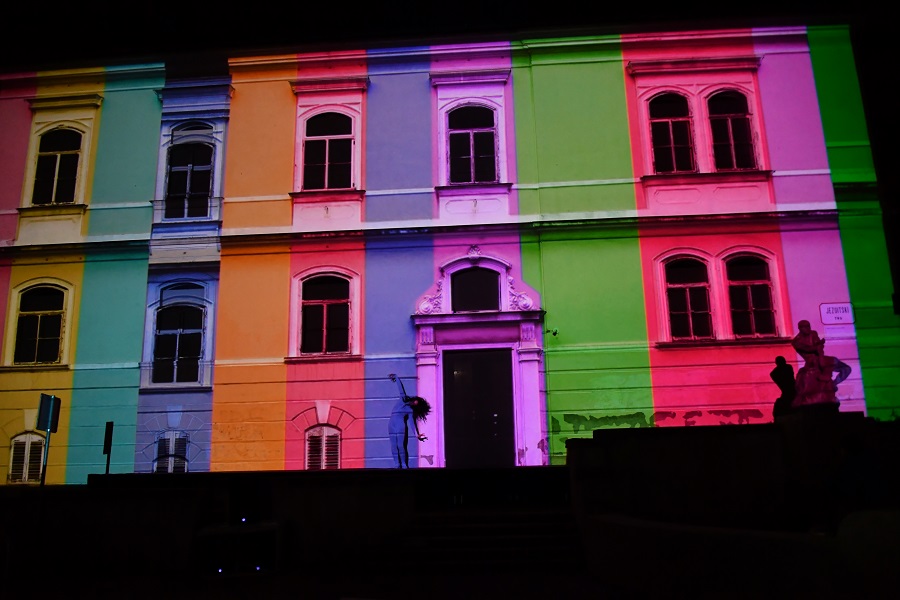
(Photo D. Miloslavic)
Organised by the Zagreb Tourist Board and partners, the city will become a canvas of art by lighting, celebrating art, architecture, design, and outdoor entertainment. The festival will be evenly split between Upper (16 locations) and Lower Town (15 locations), with a total of 32 light attractions in all. Since its inception, the festival has been a part of the Festival of Lights International, along with the likes of New York and Berlin, and that international flavour will be represented by two visiting collaborations from Berlin and Sarajevo, a first for the festival.
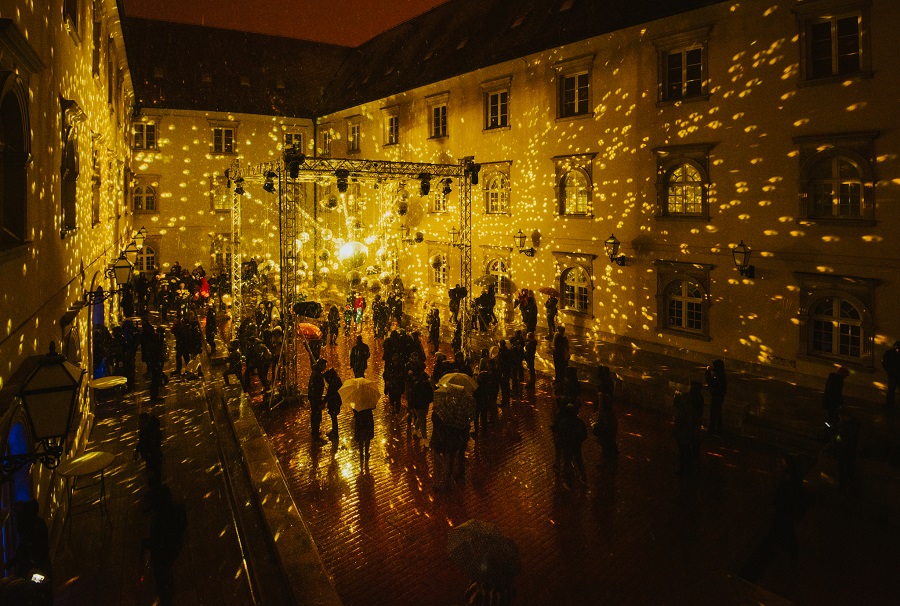
(Photo M. Mihaljevic)
An interactive light sculpture called the Heart of Europe will be installed by guests from Sarajevo on European Square. Using 3D mapping, the Heart of Europe will monitor the rhythm of a heartbeat, allowing visitors to write or read their wishes for a better future using AI. Berlin authors will have two installations of Earth and Mars, both over 4m high, on Preradovic Square and Tkalciceva Street.
And the German capital will also be highlighting Zagreb culture, as the famous Berlin Festival of Lights will light up the Croatian National Theatre, Museum of Arts and Crafts, and the Mimara Museum with 3D mapping, representing the city's historical and cultural heritage.

(Photo M. Mihaljevic)
One of the approaches I like about Zagreb's approach to tourism is its sense of inclusiveness, bringing together different aspects of the city's cultural life. For the first time, a theatre will take part in the Festival of Lights Zagreb, with the City Drama Theatre Gavella performing at the Observatory. The UNICEF Museum of Reality at the Zagreb Dance Centre is also worth a visit.
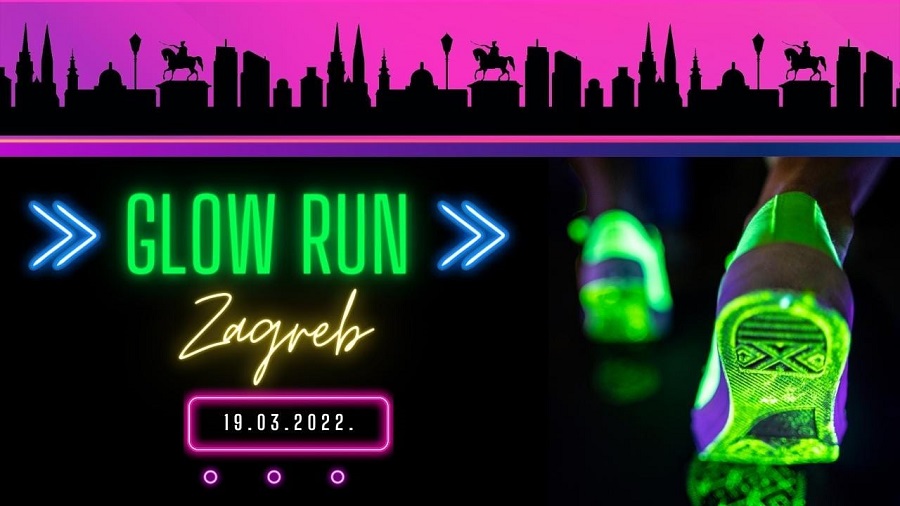
No winter event in Zagreb, it seems, can take place without a healthy aspect to it. The Advent Run, where participants run through the city's streets dressed in festive costume, has become one of the hit attractions at Advent in Zagreb, and the Festival of Lights has its own equivalent, in what might be the world's most translucent run. Prepare for a very colourful nighttime run with the themed Glow Run, which will take place at 22:00 on Saturday, March 19, starting on Marulic Square.
Zagreb has a strong tradition of celebrating strong women who have left their mark in Croatian history, and these too will be celebrated. Head to the Zagreb City Museum to see and hear the light-music attractions dedicated to Croatian opera divas, or to the walls of Strossmayer School in Varsavska Street, and see how many women you can recognise who left their imprint on Croatian cultural history.
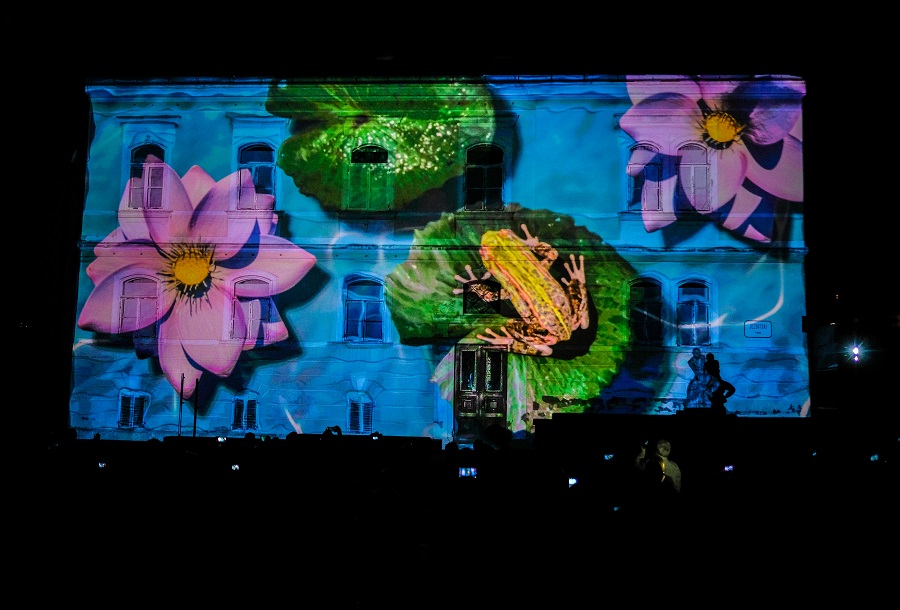
(Photo S. Kastelan)
The amazing light shows will obviously mesmerise the little ones, but they can also enjoy their own light experiences, as three light playgrounds have been especially prepared for their entertainment - Dubravkin Put, Mazuranic Square, and to the east of the Croatian Academy of Sciences and Arts (HAZU).
Quite a programme. And the light celebrations start long before you reach the centre. Zagreb Tourist Board has organised a promotional deal with Croatia Airlines for those coming to the festival, and visitors to Zagreb Airport will be greeted by installations of flowers in two locations.
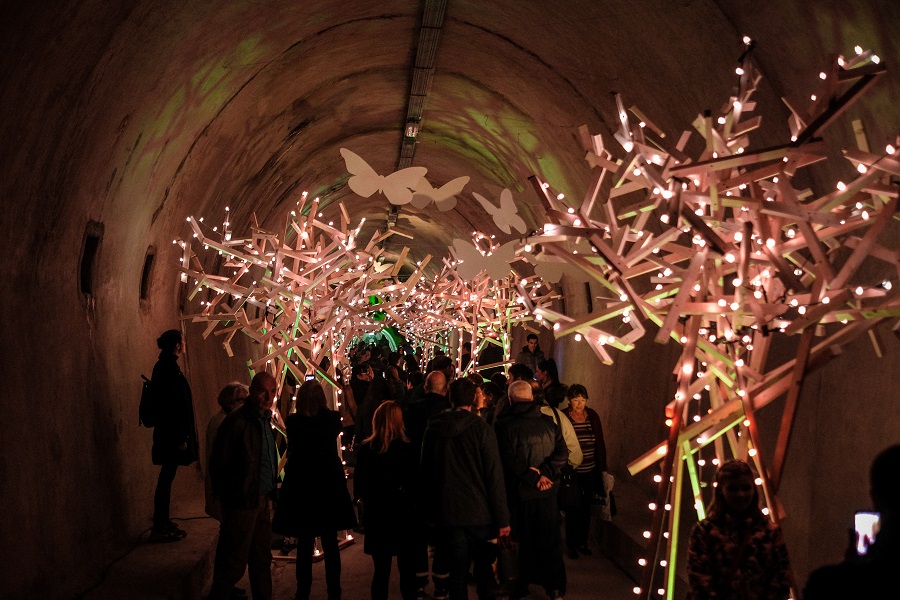
(Photo S. Kastelan)
It all starts on Wednesday, March 16 at 18:00 by the Croatian National Theatre. As has become the tradition, light performances will be performed nightly for 5 days, from 18:00 to 23:00, a wonderful chance to wander the enchanting streets of Zagreb and see them really full of life. Special attention has been paid to the issue of light pollution, hence the very specific timing per day.
And the best news is that entry to the festival is completely free of charge. You can learn much more about the festival, including a map of all the installations on the official website of the Festival.
It promises to be a very colourful event, as well as a fitting way to say farewell to winter. For soon the clocks will go forward, another hour of natural light, as the days get longer and we head into another magical Zagreb Spring and Summer season. But that is another story.
Winters can be long, but if you are in Zagreb, they can be very colourful and action-packed. To join the Facebook event, click here.
Not quite sure what to expect? Here is a little teaser from the official Festival of Lights Zagreb promo video, above.
And if you are interested to learn a little more about this magical capital city, check out the Total Croatia Zagreb in a Page guide.


